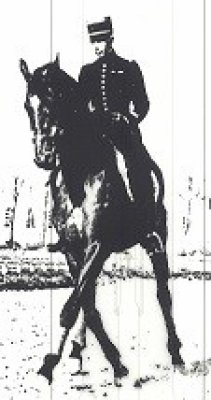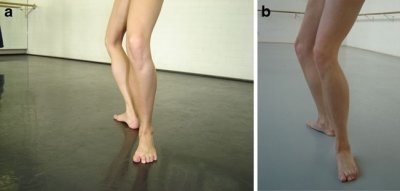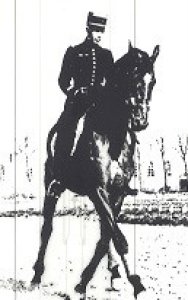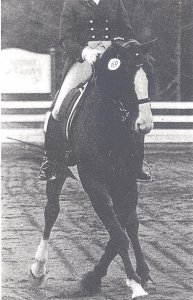The Meaning of Life
The Meaning Of Life
Jean Luc Cornille

“There is no glory in a victory gained at the expense of the horse’s soundness”
Colonel Margot
I was at four strides of the last jump. This is the distance where usually my eye is trained to see the spot for the take off. The way it looked at four strides, I was aiming for a long take off and it was a wide oxer. I should have considered the horse’s fatigue; it was the last leg of an advanced three day event long format. I should have decided for an athletically less demanding approach. I should have opted for the safety of five short strides. It was high pressure as I was only half a point ahead of the second in the provisory placement and this rider just completed a beautiful clear jumping round. However, in three day event, the jumping course is not against the clock. There is a time limit to be respected but even if I had added one stride, I would very unlikely been penalized for over time. I went for the big jump because I was cocky. I have won the last five competitions that I have entered and I was invincible. In my pathetic egotistical winning frenzy I expected that my horse will produce this considerable effort. He did not. He added a very short stride. Since I had pushed him for four long, his attempt to save the situation brought him very much in the base of the jump. He was very fast with his forelegs and he successfully propelled his body over the jump. However, it was a wide oxer and in spite of folding his hind legs very thigh under his body, the toe of one hind leg hits the pole in the descending phase of the jump. I heard the noise and let him canter toward the finish line patting his neck and shaking my head. I just lost the competition because, in my blue ribbon obsession, I expected him to give me an unnecessary effort.
I failed him. It was the last leg of a major three day event. If instead of focusing on my ephemeral glory I have respected him, we both would have won. I talk about this error because every high level rider has done one or many errors like that. The only ones that will blame me are the keyboard riders who are very good on the internet but very poor on the saddle. I passed the finish line patting his neck apologizing to him for my failure when, like a thunder, spectators exploded in applauds and screams. I look back, the pole did not fall. It bounced on the coops but it did not fall. In every competition, there is a pole of ten or fifteen riders who have the skill, the experience and the horse to win. The one who gets the blue ribbon is simply the luckiest one.
When you are in the public world, whatever it is the horse or artistic world, you quickly learn that peoples and media will make up hate stories if you lose and god stories if you win. Because the placement was so tight, half a point, the medias commented, ”Extraordinary self-control. Even under the pressure of time penalty, he finished the course patting his horse.” Talking about self-control; I screwed. I failed my horse because I was obsessed by the pathetic and ephemeral glory of a blue ribbon. I did not win; he won.
Any rider having participated to high level competitions can tell you similar story. Errors are part of life and we can either learn from them or not. By learning from them, I don’t just mean becoming a better rider. I am talking about the meaning of life. Are we so great leaders that the horse looks at us with unconditional admiration happy to perform even at the cost of great suffering because his physique is not properly coordinated for the athletic demand of the performance, or, are we just egotistical and stupid enough to believe that?
Since we are told from day one that animals are there to serve us, we start our riding career thinking that leadership is about clever manipulation of rewards and punishments. Many never explore beyond this level. They became skilled in getting obedience but never face the fact that natural reflexes are too primitive for the complexity of actual performances. After all, we have been told that equine athletic performances were the refinement of natural reflexes. “The first aim of academic equitation is to restore to the mounted horse the gracefulness of attitudes and movements which he possessed when he was free. But which becomes marred by the weight and interference of the rider” (General Decarpentry - Academic Equitation - 1949) In the same line of thoughts, we can consider that dance movements are the sublimation of natural moves. The problem is that the sublimation of natural moves demands body coordination far more complex and sophisticated that natural reflexes. Not only dancers, whatever they are humans or equines, have to learn sophisticated body coordination, but the greatest problem is that in case of difficulties, natural reflexes lead to compromises causing injuries. In human, the knee externally rotates in flexion, but not in extension. “Usually, dancers are unaware of the fact that they use this phenomenon to compensate for insufficient turn-out in the hips: starting from ‘demiplié’. The resulting torque on the knees leads to rotatory misalignment of the patello-femoral joint and tension of the medial structures.” (A. B. M. (Boni) Rietveld, Dancers’ and musicians’ injuries) Several injuries may results from this kinematics abnormality, patello-femoral pain syndrome, retro-patellar chondropathy, medial meniscustears, and (always lateral) patellar dislocation.
On the left picture, the dancer executes the demiplié with proper turn-out in the hips. On the right picture, the dancer executes the same move compensating improper turn-out of the hips by greater flexion of the knees. For an uneducated eye, both demiplié look almost the same. However, if the trainer does not have enough knowledge and understanding of the athletic demand induced on the dancer physique by the performance, the dancer will flex the knees and perform below his potential until injury ends his career.

On the left picture, the horse executes half pass with proper correlation between lateral bending and transversal rotation. On the right picture, the horse executes the move combining lateral bending with inverted rotation. For an uneducated eye, both half pass look almost the same. If the trainer does not have enough knowledge and understanding of the athletic demand induced on the horse’s physique by the performance, the horse will execute the move with inverted rotation and therefore performing below its potential until injury ends its career. In every navicular cases that we have rehabilitated, inverted rotation of the thoracic vertebrae associated with lateral bending was involved.


In spite of a more sophisticated nervous system, greater body awareness and mental capacity of analysis, dancers are unaware of the fact that they use flexion of the knees to compensate for insufficient turn-out in the hips. It is therefore extremely innocent to believe that a horse would process differently. The thought that correct aids might stimulate correct movement is very superficial and naïve. Correct aids might stimulate the move under the principle of conditioned reflexes but definitively not the body coordination predisposing the horse physique for the athletic demand of the performance. This level of thinking and riding and training does not give any chance to the horse.
A move as simple as engaging the hind legs demands sound correlation between the rotation of the limb and therefore the femur around the hip joint and simultaneously a dorso-ventral rotation of the pelvis. Pelvis movements are evidently related to proper functioning of the thoracolumbar spine. If the horse does have an asymmetry between left and right lateral bending or if lateroflexions are coupled with inverted rotations or simply if the spine is contracted because the horse is rushed faster than his natural cadence, the lack of dorso-ventral rotation of the pelvis will have to be compensated by increased rotation of the femur around the hip joint. This will alter the medial to lateral and lateral to medial inward rotation of the femur causing stifle problem. In dance language, the kinematics abnormality is named, “Screwing the knees.” In equestrian education, the kinematics abnormality is about screwing the stifles.
Simplicity sells well. This is why many trainers never explore beyond superficial training techniques. Very few have a sound understanding of the underlying biomechanics factors. The problem is that without knowledge and understandings of these underlying biomechanics factors, dressage movements screw the horse. The term “Dressage” is used in this discussion as a French word meaning “education,” whatever is or will be the horse specialty. Education is about educating the athlete’s physique and therefore teaching muscles by muscles the body coordination optimally adapted for the athletic demand of the performances.
While this level of education is initially the reason why many get interested to horses, it appears, compared to the innocence of actual riding and training techniques, overwhelming. In reality, only one major move needs to be made in one mind. Do not submit the horse. Instead, ask a question and let him think. My horse could have refused the jump or bulldoze it with his chess. Instead, he saved the jump producing a violent effort. He did not react impulsively at the last second. He prepared his performance. I felt his resistance against my impulsions the stride before the last one. He realized two strides before the takeoff that I was irrational and he calculated his last two strides. His thoughts were on the performance and not on escaping the effort. He took initiatives for the success of the performance. Next time a superficial trainer talks about your horse’s behavior, think about my horse; think what he did. At a different level, your horse did the same for you many times. If a superficial trainer talks about behavior, it is because this trainer does not have knowledge and understanding of the underlying biomechanics factors to which he exposes your horse. Deprived from sound solution, the horse tries to survive. You have the capacity of analysis; use it, try to understand why the difficulty or the resistance.
Then, you enter the real horse world, the world where the horse is a thinking partner. This is the world I want to talk to you about in the part 2 of this discussion.
Jean Luc Cornille 2014


